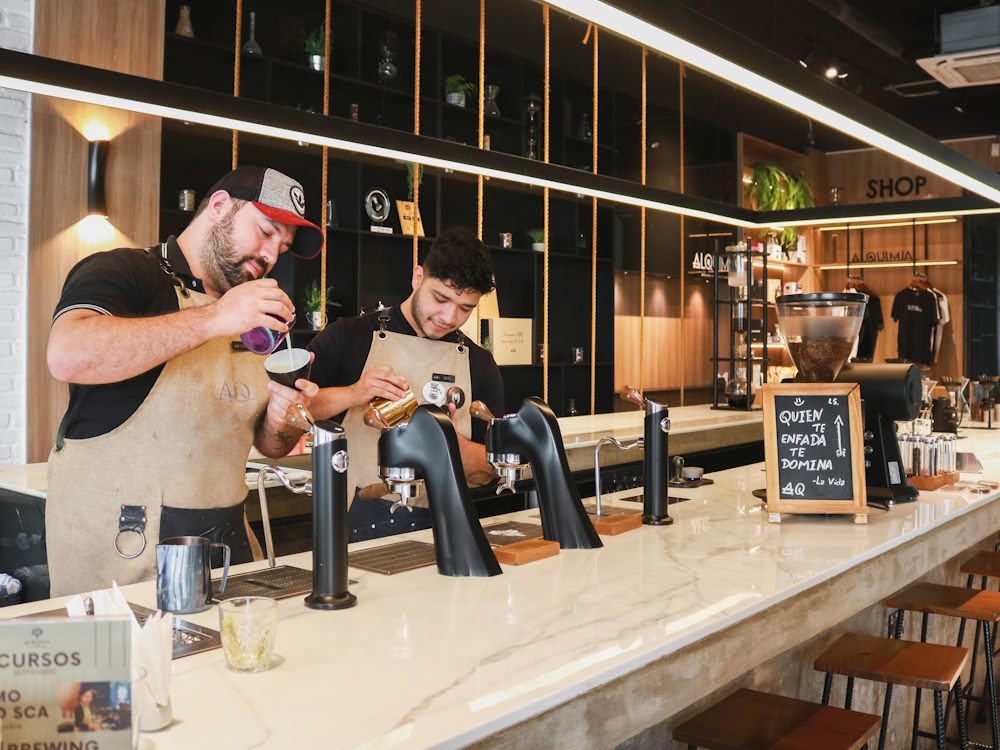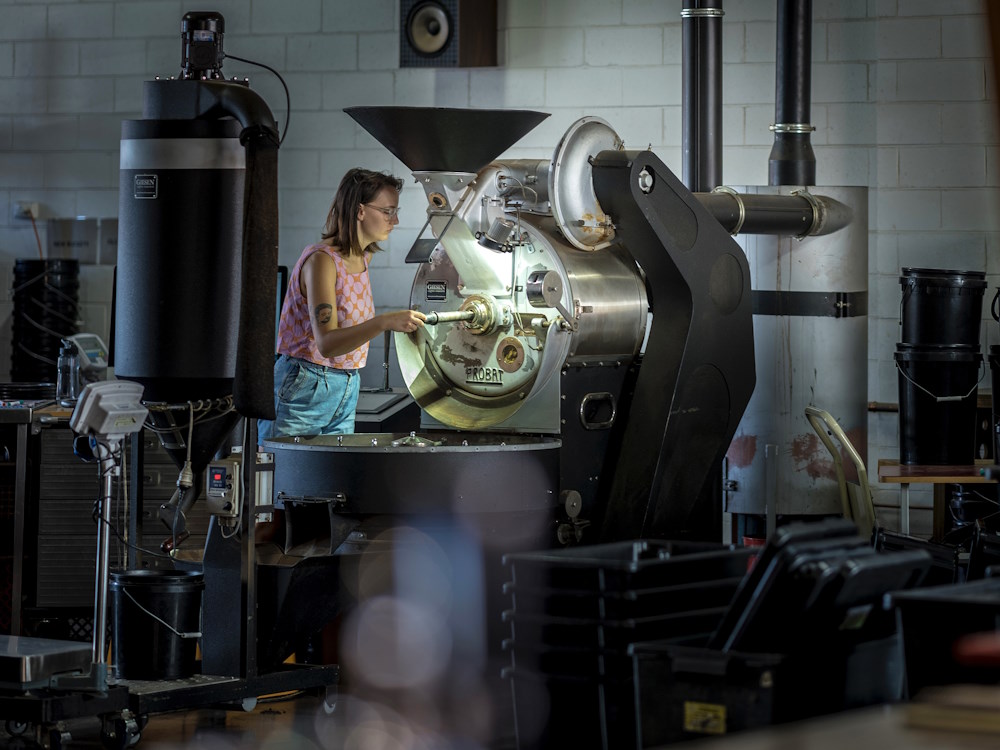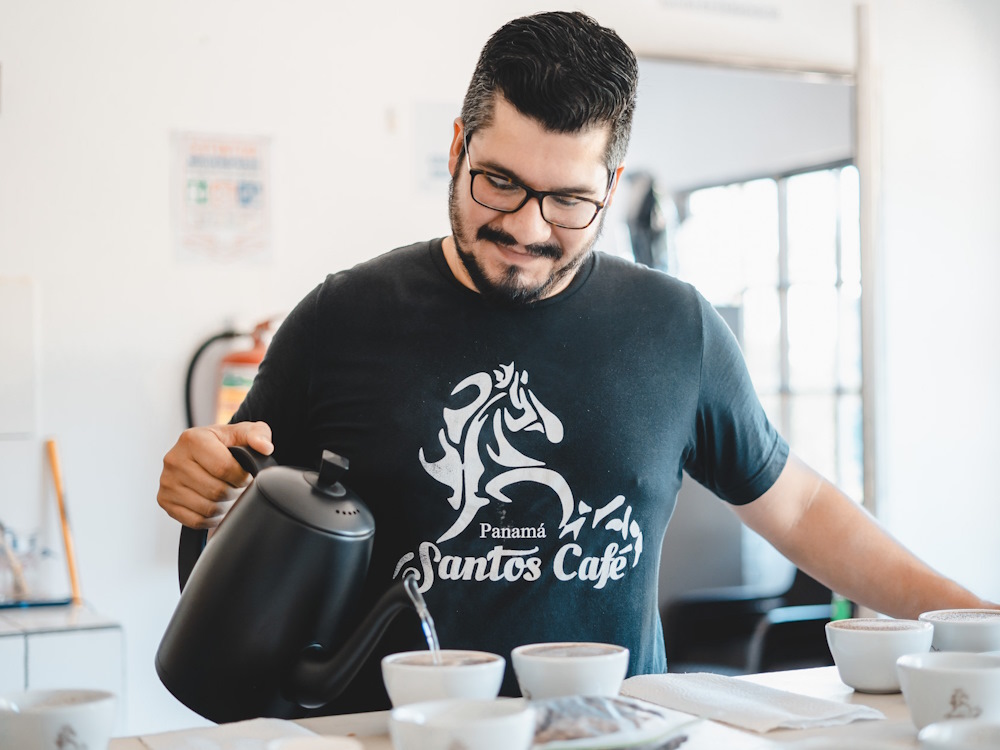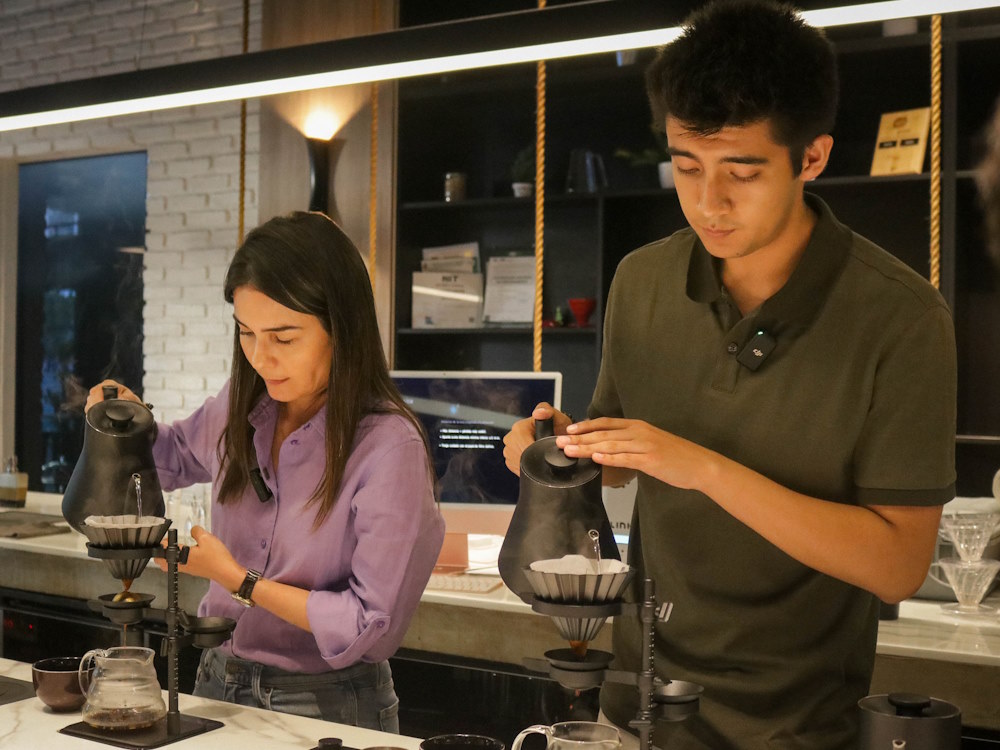Specialty coffee denotes a score of 80 or more points on the Specialty Coffee Association scale, with various grades indicating different levels of quality.
For many specialty coffee roasters, 84 to 86-point coffees account for a significant volume of their offerings. High-quality, consistent, and dependable, these coffees cater to a wide range of consumer preferences and offer a variety of flavour profiles.
But as coffee prices remain high, roasters have had to manage their offerings more effectively, and consumers have become more price conscious. Inevitably, this has influenced demand for different grades of coffee, including 84 to 86-point lots.
To find out more, I spoke with Nolan Hirte, CEO and founder of Proud Mary Coffee, Diego Lezcano, coffee producer at Santos Café, and Alejandra Schamisseddine, Q grader, barista and roaster at Ame Specialty Coffee and Alquimia Specialty Coffee.
You may also like our article on how specialty coffee is improving quality standards more widely.
Who buys these coffees?
There are varying degrees of quality between 80 and 100 points:
- Coffee which scores 80 to 84.99 is “Very good”
- Scores of 85 to 89.99 are considered “Excellent”
- Coffee scoring from 90 to 100 points are graded “Outstanding”
Green buyers, roasters, and Q graders score coffee to define its quality and value. As a result, they can better understand how they can market and sell their coffees.
Alejandra Schamisseddine is a Q grader, barista, and roaster at Ame Specialty Coffee and Alquimia Specialty Coffee, both in Bolivia. She tells me that grading and scoring helps her develop a deeper understanding of coffee.
“I can analyse quality and price and work with producers to improve the former,” she says.
She adds that a coffee’s score will influence the market it’s sold in.
“For example, Amé Specialty Coffee’s consumers have different needs and preferences than those of Alquimia Specialty Coffee,” she says. “At Amé, we sell 84-85 point lots with more traditional flavour profiles, while Alquimia sells more complex coffees that don’t drop below 86 points.”
Nolan Hirte is the founder and CEO of Proud Mary Coffee, a specialty roaster based in Australia and the US. He says that even though both markets are mature, different factors influence which coffee roasters will sell.
“The market for specialty coffee is growing in the US, while in Australia, mainly for socioeconomic reasons, it is becoming more difficult to pay more for better coffee,” he says. “This defines the types of coffee sold in each market.”
At the same time, he says consumers aren’t particularly interested in cupping scores and instead focus on flavour. For that reason, he tells me Proud Mary offers different categories of coffee so that consumers can make more informed purchasing decisions that are aligned with their expectations.

How do roasters use 84 to 86-point coffees?
Coffees with different scores are not only sold in different markets, but they are also used for different purposes. Nolan thinks that 84 to 86-point coffees are becoming a new standard for espresso and espresso-based drinks.
“We make the effort to buy coffees thinking about how they will be used,” he says. “In Australia, for example, a majority of the coffee that’s sold will be prepared as lattes, flat whites, or cappuccinos. Some high-end coffees don’t always translate as well when paired with milk.”
Diego Lezcano is a coffee producer at Santos Cafe, located in Santa Clara, Renacimiento in Panama. He says that up to 70% of the farm’s production volumes are 84 to 86-point coffees, with 10% reserved for slightly lower quality. The rest of the farm’s production is focused on higher-quality coffee and specific varieties to sell in more mature markets.
“Washed coffees from our farm fit perfectly into the 84 to 86-point category,” he tells me. “These coffees are suitable for espresso, are super sweet, round, and classic, and pair well with milk. We sell primarily to clients in Australia and in the local market.”
Consistency is key
Both Diego and Nolan agree that 84 to 86-point lots can be considered “everyday” coffees, so the most important thing is to guarantee consistency.
“We establish relationships with producers who can supply us with these coffees in large quantities year after year,” Nolan explains. “You need to develop a solid relationship where both parties can benefit and offer a consistent product. It’s a completely different dynamic to selling high-end micro lots.”
At the farm level, however, many factors can influence coffee quality and consistency. Climatic conditions and the price of inputs such as fertilisers can impact each harvest. Diego mentions that it is important to carry out farming good practices and implement quality control methods to mitigate these fluctuations.

How might demand for these coffees change in the coming years?
With coffee prices remaining high for the last few months, this market volatility inevitably influences consumer demand for different grades of coffee.
“It’s becoming more expensive and more difficult for producers to grow high-quality coffee,” Alejandra says. “Market volatility, climate change, and high costs of labour and fertilisers make it more challenging.”
Nolan points out that advanced developments in drying techniques and processing allow producers to minimise risk and grow more reliable and consistent coffee, helping them secure more stable prices.
“We will be forced into a situation where the price will go up, and not everyone is going to want to pay it,” he says. “I believe the only way that we can build a sustainable future is if we are able to communicate effectively to the consumer the reasoning behind pricing in a transparent manner.”
Impact on wider industry
Diego comments that the increasing popularity of exclusive coffees like Panama Gesha also helps spotlight other high-quality varieties, allowing them to sell them for better prices.
“It’s still becoming more expensive to produce coffee; however, being able to sell it for good prices can make it more sustainable for producers,” he says. “We have to be able to translate this value to the final consumer so that they continue paying for quality coffee despite inflation.”

As consumer becomes more knowledgeable and quality becomes a bigger priority, 84 to 86-point coffees could become a new standard in coffee shops, particularly for espresso-based drinks.
But with market volatility expected for the foreseeable future, it remains to be seen whether demand for these high-quality coffees will continue at pace.
Enjoyed this? Then read our article on why a new world record price for Gesha isn’t what the coffee industry needs.
Photo credits: Santos Café, Proud Mary Coffee, Ame Specialty Coffee, Alquimia Specialty Coffee
Perfect Daily Grind
Want to read more articles like this? Sign up for our newsletter!
The post Has demand for 84 to 86-point coffees changed in recent years? appeared first on Perfect Daily Grind.

